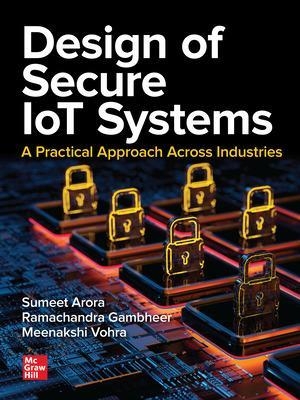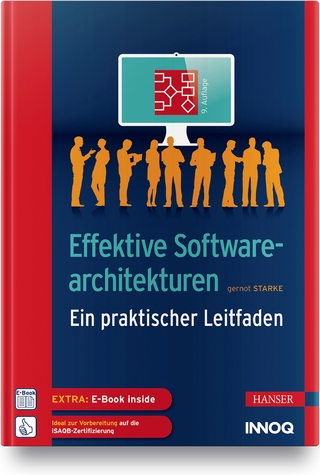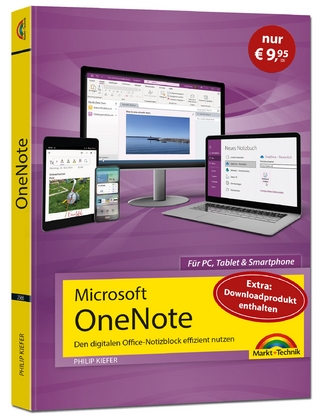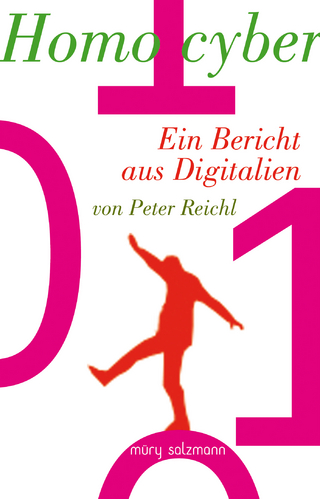
Design of Secure IoT Systems: A Practical Approach Across Industries
McGraw-Hill Education (Verlag)
978-1-260-46309-5 (ISBN)
Build secure IoT devices and networks for a wide range of industries
This practical guide fully explains the technology behind the Internet of Things, machine-to-machine communication, and automation. Written by a team of experts from leading firms, Design of Secure IoT Systems: A Practical Approach Across Industries covers all aspects of system architecture, protocols, requirements, and design. You will discover how to design and engineer IoT devices and networks with trust and security. The book features industrial automation case studies and simulation examples from a wide range of fields.
Coverage includes:
IoT architecture and technology fundamentals
Connected machines and M2M communication
Network protocols and architecture
IoT hardware design fundamentals
WAN, IP, and MAC configuration
IoT data systems design
Designing with trust and security
Data security policies and regulations
Cybersecurity threats and risks
Automation
Use cases across industries
Industry compliance and standards
Sumeet Arora is Senior Vice President and Head of engineering at ThoughtSpot Inc., an enterprise in the business intelligence market segment, with the mission of helping enable a fact driven world leveraging search and AI for analytics. Prior to joining ThoughtSpot, Arora was Senior Vice President and General Manager of Service Provider Networking at Cisco Inc. In this role, he led the engineering, development, and product management team for the networking/routing portfolio aimed at the global Service Provider segment. Ramachandra Gambheer is Senior Technical Operations Manager at Cisco Systems Inc. He has 29 years of overall experience in the field of IoT and has published several papers in national and international journals. Meenakshi Vohra is a security professional at Uber's Technologies Inc. working with security protocols, embedded platforms, and cloud technologies for autonomous vehicles including self-driving cars, drones, air, bikes, and scooters. She has over 20 years of experience in network and software product development. Previously, she was lead security architect at VMware and has held senior engineering roles at Lockheed Martin, Symantec, and others. Meenakshi holds a bachelor's degree in computer science and a master's degree in networking and security.
Preface
1 Evolution of IoT
1.1 Introduction to Digital Transformation
1.2 Connected Value Chain
1.3 What Is Digital Transformation?
1.4 Introduction to IoT
1.5 Building Blocks of IoT System
1.6 Evolution of IoT
1.7 Connected Vehicle Use Case
1.8 Chapters Overview
2 IoT Architecture and Technology Essentials
2.1 Introduction
2.2 IoT System Architecture
2.3 IoT Technology and Protocols
2.4 Applying Learnings to Connected Vehicle Use Case
2.5 Conclusion
3 Connected Machines
3.1 Introduction
3.2 Machine-to-Machine (M2M) Segments
3.3 M2M Communication
3.4 Applications of M2M
3.5 Key Features of M2M
3.6 Architecture and Components of M2M
3.7 M2M Application Communication Principles
3.8 Issues/Concerns in M2M
3.9 Standardization Efforts for M2M
3.10 Conclusion
4 Network Architecture for IoT
4.1 Introduction
4.2 Network Terminology
4.3 ISO-OSI Reference Model
4.4 Network Protocols
4.5 WAN Architecture
4.6 MAC Source Address
4.7 Data Reception
4.8 Multiprotocol Label Switching
4.9 Data Center
4.10 Data Center Networking
4.11 IoT Gateways
4.12 Conclusion
5 IoT Hardware Design Fundamentals
5.1 Introduction
5.2 Hardware System Requirements
5.3 Hardware Functional Specifications
5.4 Software Functional Specifications
5.5 Hardware Component Selection
5.6 Design for Manufacturability
5.7 Design for Testability
5.8 Schematics, Layout, and Gerbers
5.9 PCB Fabrication and Assembly
5.10 Summarizing HW Design Flow
5.11 Applying Learnings to Connected Vehicle Use Case
5.12 Examples of Commercially Available IoT Devices
5.13 Standards Used in HW Component Configurations
5.14 Selection of Network Hardware for IoT Applications
5.15 IoT Hardware Security
5.16 Conclusion
6 IoT Data Systems Design
6.1 Introduction
6.2 IoT Data System
6.3 Value Chain Activity Generates Data
6.4 Operational Data: Sensors and Devices
6.5 Business and Customer/User Data
6.6 Intersection of Operational Data and Business Data
6.7 Structured and Unstructured Data
6.8 Data Systems Design
6.9 Data Transport
6.10 Data Collection
6.11 Data Storage
6.12 Data Preparation
6.13 Organizing Data for Analytics
6.14 Data Lake, Data Warehouses, and Efficient Access to Data
6.15 Analytics and Business Intelligence
6.16 Data Science and IoT
6.17 Machine Learning
6.18 Putting It Together to Build an IoT Data System
6.19 Applying Learnings to Connected Vehicle Use Case
6.20 Conclusion
7 IoT: Designing with Trust and Security
7.1 Introduction
7.2 Need for a Secure IoT System
7.3 Requirements for Secure IoT System
7.4 IoT Device Security
7.5 Trusted IoT Device
7.6 Trusted Device Identity
7.7 IoT Device Secure Storage
7.8 Secure Boot and Trusted Execution Environment
7.9 Secure Root of Trust
7.10 Trustworthy Firmware and Software
7.11 Public Key Infrastructure
7.12 Trusted Supply Chain
7.13 Secure Random Number Generator
7.14 IoT D2X (Device to X) Communication Security
7.15 Mutually Authenticated Endpoints
7.16 Secure Communication Channel and End-to-End Message Integrity
7.17 Secure Monitoring Systems
7.18 IoT Device to Cloud Security
7.19 IoT Data Security Policies and Regulations
7.20 IoT Trusted Platform
7.21 Secure Authentication
7.22 End-to-End Security (Including Third Parties)
7.23 Applying Learnings to Connected Vehicle Use Case
7.24 Conclusion
Appendix: IoT Cybersecurity Threats and Risks Review Sample
8 Automation
8.1 Introduction
8.2 IoT Device Life Cycle Management
8.3 Zero Touch IoT Devices
8.4 Plug and Play IoT Devices
8.5 IoT SIM Cards and Management
8.6 Commercially Available IoT Control Software
8.7 Secure Automation of IoT Network Infrastructure
8.8 IoT Application Software Design Principles
8.9 Cloud Native Software
8.10 Automation of Value Chain Workflows
8.11 Edge Computing and Cloud Computing
8.12 Applying Learnings to Connected Vehicle Use Case
8.13 Conclusion
9 IoT Use Cases Across Industries
9.1 Introduction
9.2 Manufacturing Sector
9.3 Connected Vehicles
9.4 Seaport Automation
9.5 Airport Automation
9.6 Drones for Medical/Healthcare Systems
9.7 IoT Application in Oil and Natural Gas Industry
9.8 Conclusion
10 IoT Use Case Exercises
10.1 Banking Sector/Bank of Things
10.2 Agriculture—Agri of Things
10.3 Enhanced Smart Home (Home Automation)
10.4 Smart Manufacturing
10.5 Internet of Medical Things (IoMT)
10.6 Smart City with Smart Vehicles and Smart Home
10.7 Smart Grid
References
Index
| Erscheinungsdatum | 19.07.2021 |
|---|---|
| Zusatzinfo | 100 Illustrations, unspecified |
| Verlagsort | OH |
| Sprache | englisch |
| Maße | 196 x 241 mm |
| Gewicht | 549 g |
| Themenwelt | Mathematik / Informatik ► Informatik |
| ISBN-10 | 1-260-46309-5 / 1260463095 |
| ISBN-13 | 978-1-260-46309-5 / 9781260463095 |
| Zustand | Neuware |
| Haben Sie eine Frage zum Produkt? |
aus dem Bereich


